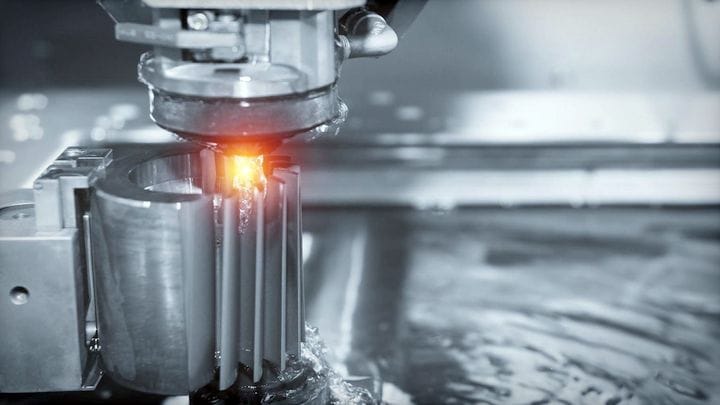![EDM machining [Source: SolidSmack]](https://fabbaloo.com/wp-content/uploads/2020/05/image-asset_img_5eb09911eb9e8.jpg)
If you thought the age-old craft of metalworking couldn’t get any more precise, well think again.
In a recent semi-viral Twitter post from Singaporean news service Mothership.sg, engineers demonstrate how to cut metal so precisely that you can’t even see the grooves between the pieces when they are put back together.
This manufacturing process is known as EDM (electrical discharge machining—not “electric dance music”), and consists of a defined electrical spark that runs across a metal surface—allowing for the ridiculously precise cuts to be made. Yeah—it’s pretty freakin’ awesome:
Precision engineering grooveless tech the next thing pic.twitter.com/OnUFRjl4vL
— Mothership.sg (@MothershipSG) March 25, 2019
To put it simply, the spark used in the EDM process is created by running an electrical conductor close to the material. Once the conductor makes contact with a surface, an electrical current produces heat up to 12,000°C (21,500°F), which ultimately melts precise cuts through the material.
What’s even more amazing is that the conductor controls the spark; it only cuts the surface and nothing else—producing precise cuts that can barely be seen when the pieces are realigned.
EDM is most commonly used for making airplane parts and artificial bones—which makes sense considering the delicate nature in which they are used. For context, airplane parts need to have as little space between them to avoid splitting apart mid-flight, while replacement artificial bones naturally need to be as precise as possible as a replacement for a human body part.
No matter which way you cut it (see what I did there), parts cut with EDM are nothing short of an amazing technical achievement—even if you can’t see them at all.
Read the rest at SolidSmack











Aerosint and Aconity have proven out their work in multi-metal powder deposition 3D printing.